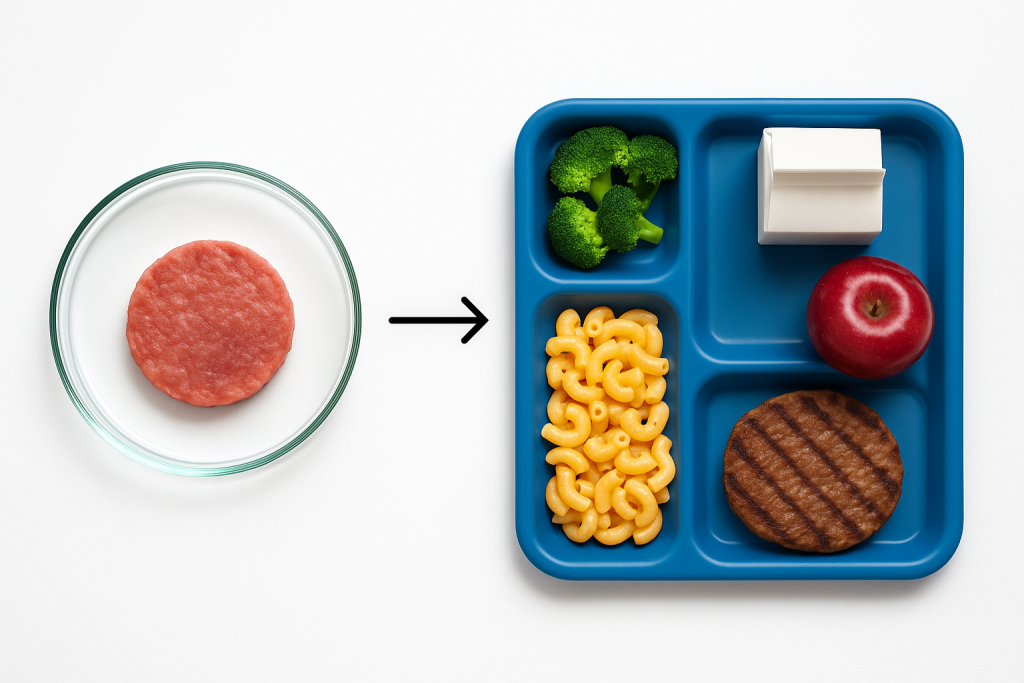The future of food may start in the cafeteria, not the supermarket.
What Is Cell-Based Meat?
Cell-based meat—sometimes called cultivated or lab-grown meat—is real animal protein grown from animal cells rather than raised and slaughtered livestock. It’s biologically identical to conventional meat but produced in a bioreactor, not a barn.
This innovation uses a small sample of animal cells, which are fed nutrients and oxygen until they grow into muscle tissue. The result: meat without the farming footprint.
Why Schools Are the Testing Ground
Schools are becoming early testbeds for this technology for one key reason: scalability meets social impact. Public institutions serve millions of meals daily, making them ideal environments to test both production efficiency and public acceptance.
Pilot programs in Singapore, Israel, and the United States are already exploring how cultivated chicken or beef could appear in school lunch trays within the next decade. These partnerships often involve government-backed nutrition studies and ethical review boards.
Nutrition and Safety: What Parents Should Know
Cell-based meat undergoes rigorous oversight. In the U.S., both the FDA and USDA share regulatory authority, ensuring food safety at every stage—from cell sourcing to packaging.
Nutritionally, cultivated meats can be optimized for better health profiles. For example, producers can reduce saturated fats, enhance amino acid balance, and fortify products with micronutrients that traditional meat may lack.
However, transparency remains crucial. Parents and educators are demanding clear labeling and long-term studies to ensure children’s health remains the top priority.
The Economics of Feeding the Future
Currently, cultivated meat is costly. But as bioreactor technology scales, costs are expected to drop dramatically—potentially rivaling traditional meat by the early 2030s.
For school systems operating under tight budgets, cost parity will be essential. Early government procurement programs could act as catalysts, similar to how solar energy adoption was accelerated by public sector investment.
Ethical and Environmental Implications
Cell-based meat eliminates animal slaughter and significantly reduces land and water use. It also has the potential to cut agricultural emissions by as much as 90%, depending on the production model.
For educators, this opens a new kind of lesson plan—connecting environmental science, ethics, and biotechnology in the real world. Students aren’t just learning about sustainability; they’re eating it.
Challenges on the Path to the Cafeteria
Despite its promise, several challenges remain:
- Public Perception: Some parents still see “lab-grown” as unnatural.
- Infrastructure: Schools will need new supply chains and preparation standards.
- Policy: Government food programs must update procurement guidelines for novel proteins.
Overcoming these barriers will require coordinated efforts between scientists, policymakers, and educators—each helping translate science into everyday understanding.
A Future on the Fork
Cell-based meat isn’t science fiction anymore. It’s a practical vision for a more ethical, sustainable, and resilient food system. As schools lead early trials, they’re shaping more than lunch—they’re shaping the next generation’s relationship with food technology.


